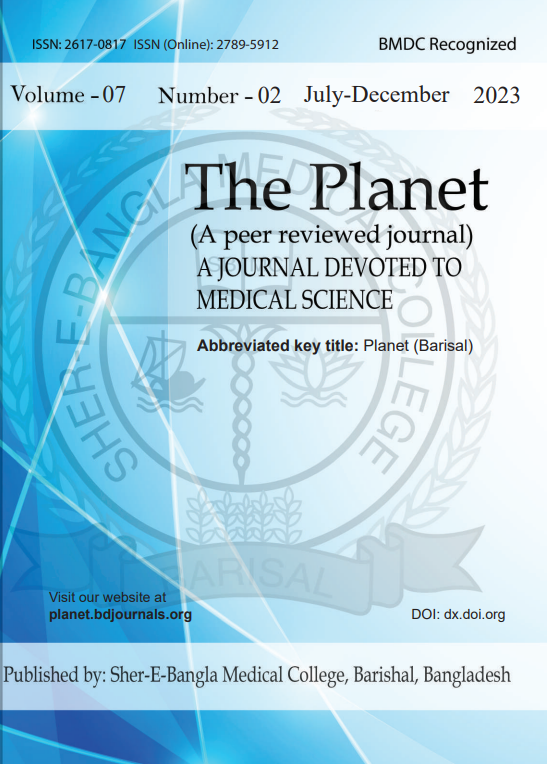Factors and Outcomes of Emergency Caesarean Sections Among the Patients Admitted to Dhaka Medical College Hospital
Published 14-12-2024
Keywords
- emergency caesarean section,
- maternal morbidity,
- neonatal outcome,
- antenatal care,
- fetal distress
Copyright (c) 2024 The Planet

This work is licensed under a Creative Commons Attribution 4.0 International License.
How to Cite
Abstract
Introduction: Caesarean section is a critical intervention in modern obstetric practice, aimed at reducing maternal and neonatal morbidity and mortality. This study explores the factors contributing to emergency caesarean sections, their indications, and associated outcomes in a tertiary care setting. Methods & Materials: This descriptive, cross-sectional study was conducted at the Department of Obstetrics and Gynecology, Dhaka Medical College Hospital, over two months (May 2022–October 2022). A total of 100 cases of emergency caesarean sections were selected using purposive sampling. Data on sociodemographic factors, antenatal care, indications, operative techniques, complications, and outcomes were analyzed. Results: Total 100 pregnant women were selected who underwent emergency caesarean sections were included in the study. The leading indications were fetal distress (18%), previous caesarean section (15%), and severe eclampsia or eclampsia (11%). Most patients (92%) were aged 20–34 years, and 58% belonged to the lower socioeconomic class. Inadequate antenatal visits were noted in 75% of cases. Spinal anesthesia was used in 84% of procedures, while 97% of surgeries employed the Pfannenstiel incision. Postoperative complications occurred in 55% of cases, with hemorrhage (20%) and infection (16%) being predominant. Neonatal complications were observed in 41%, primarily prematurity (10%) and neonatal jaundice (7%). Maternal mortality was absent, and 65% of patients were discharged within one week of surgery. Conclusions: The high rate of emergency caesarean sections reflects inadequate antenatal care, low socioeconomic status, and delayed referrals. Strengthening antenatal services and improving timely identification of high-risk pregnancies could reduce emergency interventions and improve maternal and neonatal outcomes.



